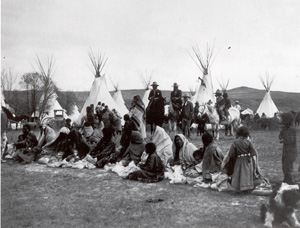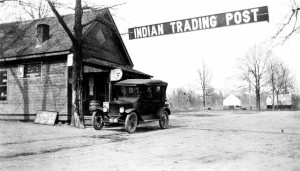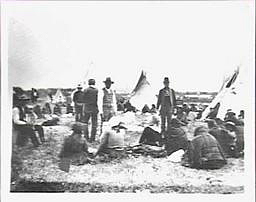Treaties between the U.S. government and Native Americans almost always stipulated annual payments of money and/or goods to tribes which had signed the treaties. On most reservations, one day was set aside for these annuity payments, and that specific day became known as “payment day” for money annuities and “ration day” for annuities paid in goods. Payment Day could become quite an event. Almost every Indian on a reservation came to the payment place, usually the Indian agency. The agency consisted of an office building, employee housing, storage, barns, etc.; it was also (usually) under military protection and so included troop quarters and military storage buildings.
Knowing that Indians would have money on Payment Day, traders in all sorts of goods flocked to the agency and displayed their merchandise. Sometimes as many as 100 traders showed up, and their wares were geared toward merchandise they knew their customers wanted. Grains, cooking pots and pans, washtubs, coffee mills, calico and muslin, blankets, saddles, bridles, jewelry, and so on were offered, and the exchange sometimes became a festive, two-to-four day event. Unfortunately, rum and whiskey peddlers set up their stations close by as well, and many Indians fell prey to intoxicants that perhaps led them to spending extravagances.


